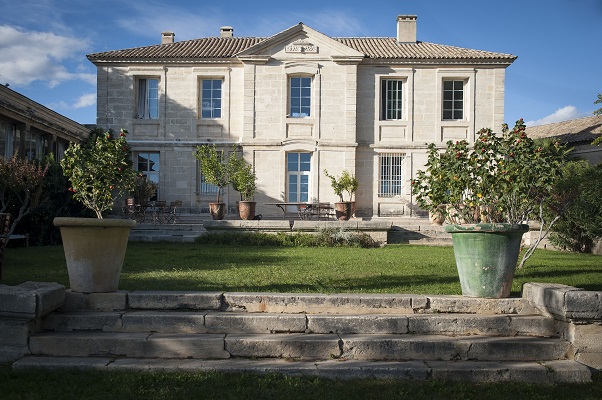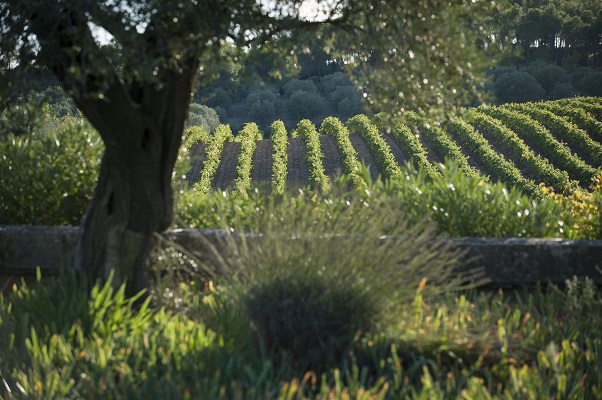€10.90, $15, £14.25, CA$23.45, 18.50 Swiss francs, 199 Swedish krona
Tasting blind has advantages and disadvantages, as has been discussed quite a bit on this website (see here and here). But undertaking a recent tasting of Languedoc and Roussillon rosés, I decided to taste everything blind, to avoid penalising any wine that might come in a particularly noticeable bottle. I also know some of these estates quite well and felt it would level the playing field if I didn’t know whose wine I was tasting. (My husband deserves a particular mention for suffering the tedious job of opening and pouring over 400 rosés for me.)
In the case of Puech-Haut Prestige, the wine benefited from being poured unseen, as my immediate assumption when the bottle arrived was that the packaging might be compensating for product. It comes in a very tall, slim, frosted bottle, shaped a bit like an elongated teardrop, but the front of the bottle is completely flat, as if someone had sliced the curve off. I suppose it has to be extra tall to make up for the volume lost by flattening the one side...? There is no label to speak of. Just ‘Puech-Haut Prestige’ and the Puech-Haut rams’ horns engraved in dramatic black contrast to the pale frosted bottle.
It looks elegant. It certainly stands out. But it’s a bit too much like a perfume bottle, it’s inconveniently tall, and to have gone to the extent (not to mention cost) of commissioning a completely new bottle design, having a new mould cast and producing bespoke bottles seems a lot of fuss for a bottle of wine that comes in at under £15.
Nonetheless, the wine itself is very good. My tasting note for this, wine number 50 in the line-up, read: ‘Super-pale onion-skin colour. A light veil of smokiness over fresh rhubarb. Savoury rather than sweet – creamy almonds with a feather brush of nectarine and spice on a palate flooded with morning light. Fine, fine balance. On tiptoe. Hard to pin down … almost diaphanous, and yet there is a tightly wired intensity.’
This elegant, understated wine has been made with a great deal of thoughtfulness, and will pair beautifully with delicate dishes – grapefruit and scallop ceviche; grilled prawns drizzled with yuzu; crab and fennel salad; or even just a light pasta in a fresh tomato sauce with the odd basil leaf.
Ch Puech-Haut is a fairly prestigious estate in the eastern Languedoc (a Farr Vintners' favourite) with vineyards in Pic St-Loup and St-Drézéry, established by French businessman Gérard Bru in 1981. He spared no expense in setting it up, and Michel Rolland was the first consultant oenologist, from 1996 to 2006. Nowadays it is leading Rhône oenologist Philippe Cambie who calls the shots and although they have been criticised for their oak-heavy, Napa Valley style of winemaking, it seems as if the rosés have been handled with a remarkably light touch. I wonder whether there will be changes up ahead now that Marc and Olga Escassut (both oenologists from the south of France) have become co-owners with Bru. Although I see the website is still heavily focused on Bru’s personality, so perhaps things will continue as they are for the time being.

The wine is a blend of 40% Cinsault and 60% Grenache from 30-year-old vines. The vineyards are in St-Drézéry, a commune within Grés de Montpellier which is lobbying to become an appellation communale by 2020. It’s a hot area on, uniquely, galets roulets, pebbles over limestone, which makes it quite different from the AOP Languedoc that surrounds it. Winemaking is simple and unremarkable. The grapes were machine picked, direct pressed, cold settled and fermented in stainless steel. Residual sugar is less than 1 g/l and pH is 3.37. The alcohol clocks in at 13%.

It must be produced in sufficient volume for the wine to pop up all over the place: in France, Germany, Netherlands, Belgium, Spain, Switzerland, Austria, Sweden, Romania, Slovakia, UK, USA (in several states) and Canada. You can even find older vintages in Hong Kong and Australia. So I find it remarkable that the quality is so high, despite having been made in large quantities and available at such a reasonable price. Le Vignoble in Devon sells it at £14.25 and you can buy it in Germany for €10.90, although the price does go up in some places to as much as £16.55 in the UK and $26 in the US. You can also buy it in magnum (in which case it could double as table décor depending on your colour scheme).














